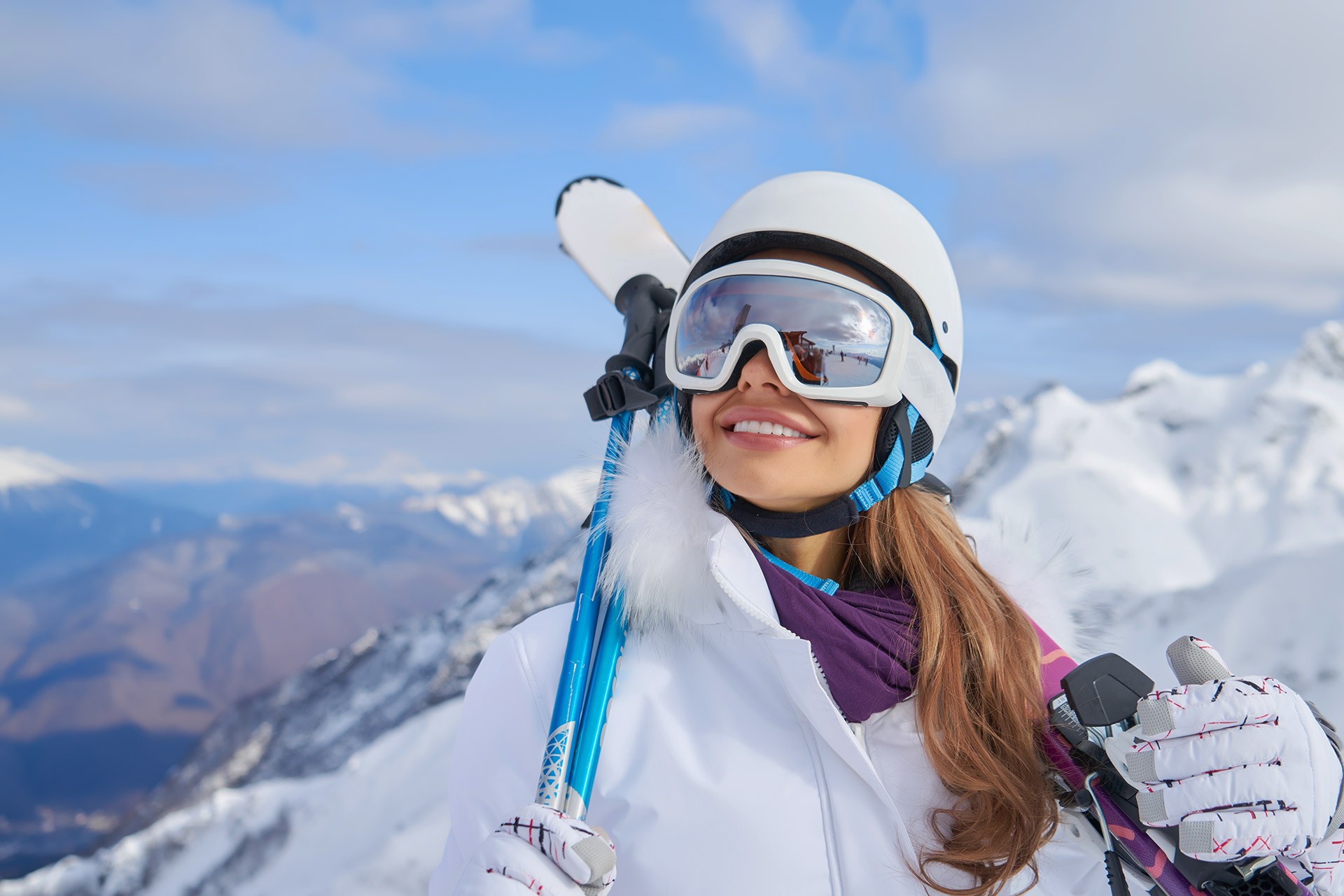Finding the best ski goggles is simple right? How much can there be to consider? Well, it turns out, more than we thought.
There are some slick models on the market with impressive technical features. From cylindrical lenses and spherical lenses, dual lenses to interchangeable lenses, anti-fog coating which is the bare minimum in a pair of quality goggles, vents, and turbo fans that suck the moisture out of the goggle. Picking the best ski goggles can be downright exhausting! It seems it requires more thought than just choosing a colour and style to suit your face.
A fun fact: American orthodontist and avid skier Bob Smith was the first to figure out the principle of the fog-resistant insulated double-lens goggle, with foam-screen ventilation ports to screen out the powder. That was in 1985 and Smith and his wife, Jean, began manufacturing those very popular Smith Goggles in their kitchen.
But, take this seriously. Visioncenter.org note that beyond the obvious need to protect your eyes from the cold and wind (unpleasant and, in fact, dangerous), the best ski goggles protect your eyes from the sun and its harmful UV and UVB rays. And, note there is a difference between sunglasses (they do good things) and goggles (which do it all).
Must-haves for the best ski goggles
A good goggle will be one that allows for the best vision in the light you are skiing in and a lot of top-of-the-range goggles come with multiple lenses included or even photochromic lenses that adjust to the external light. Good compatibility with a helmet is a must these days and the comfort of the face foam is the third most important factor. Most modern ski goggles have very good anti-fog lenses as long as you keep the face foam dry.
Technical features
Interchangeable lenses, different sizes and even air conditioning and built on face masks these days.
OnTheSnow Tip: There are two main types of lens shape: cylindrical and spherical. Cylindrical lenses are flat lenses, these are in the traditional style, and they curve across from left to right but are vertically flat between the forehead and the nose. Spherical lenses not only curve from left to right but also from top to bottom (they’re shaped like a human eye). Spherical lenses are typically more expensive because they produce a better field of view, better peripheral vision, better ventilation and less glare as the lens has fewer surface points. Cylindrical goggles are perfectly fine to use so if you’re short on cash, opt for these.
Is lens tint important?
This is the number one factor that affects the daily performance of the ski goggle. An experienced shop sale assistant will be able to help you here.
OnTheSnow Tip: Tints are designed to help skiers and riders adapt to the changes in light. They are categorised from 0 to 4 with 0 being suitable for night conditions and 4 being suitable for the brightest conditions and high altitudes. Most people will choose an all-round lens in category 2 or 3 for variable skiing. Bright sunny conditions = dark lens so less light can pass through the goggles (e.g. grey, dark brown, mirror). Foggy conditions and poor visibility = lighter lenses because more light is required to pass through the goggles (e.g. pink, yellow, amber/gold, green).
How much are they?
Goggles vary in price from £30 up to £200+ and there are hundreds of models on the market.
Sunnies or ski goggles?
Most people are going for ski goggles these days just because they fit so well with a helmet, and helmet wearing is still on the rise.
OnTheSnow Tip: Choose ski goggles over sunnies. Sunglasses are designed for bright sunny conditions whereas goggles are a much more useful all-round product, designed to work in snow, wind and cloud. The higher you ski the stronger the Ultra Violet (UV) light and the more protection you’ll need – goggles provide better coverage, more protection and will prevent snow from getting in.
New technology
Not quite this year but the big shift is into magnetic, interchangeable lens technology now – super fast to swap lenses on the mountain.
OnTheSnow Tip: The best ski goggles now come with two sets of lenses, one for bright conditions and one for low-light conditions. Photochromatic lenses are not the same thing – these lenses adapt the tint automatically and may be worth investing in depending on your skiing needs.
Are cheap ski goggles ok?
The main point here is that cheap ski goggles are made cheap. By this, I mean that the double lens on all goggles is made with a wider gap in the more expensive models meaning they don’t fog up as easily on days where the temperature difference between your face and the resort is very great.
Do experts need different goggles?
Everyone needs the best possible vision on the hill but these people may need it more than others because the speed and terrain they are skiing will be more dangerous.
Is UV protection important?
Certainly, every goggle we stock is fully UV protective and carries a European safety standard on the lens.
Maintenance and Care
OnTheSnow Tips:
Only clean your ski goggles with the bag that they came in. Tissues, your sleeve, or any other fabric that’s not designed to clean goggles will ruin them and will result in scratches.
Only clean the lens when it’s dry – it’s preferable to ski with a little bit of snow (use your common sense here) than to rub the snow in. Really, you should let the ski goggles dry out.
Don’t rest the ski goggles on the lens side – this will damage them.
Have a spare pair of goggles so in case you fall and get snow inside your goggles, you can grab your backup pair and continue down the mountain without waiting for them to dry out.
For more gear related stories go to our Gear Guide





